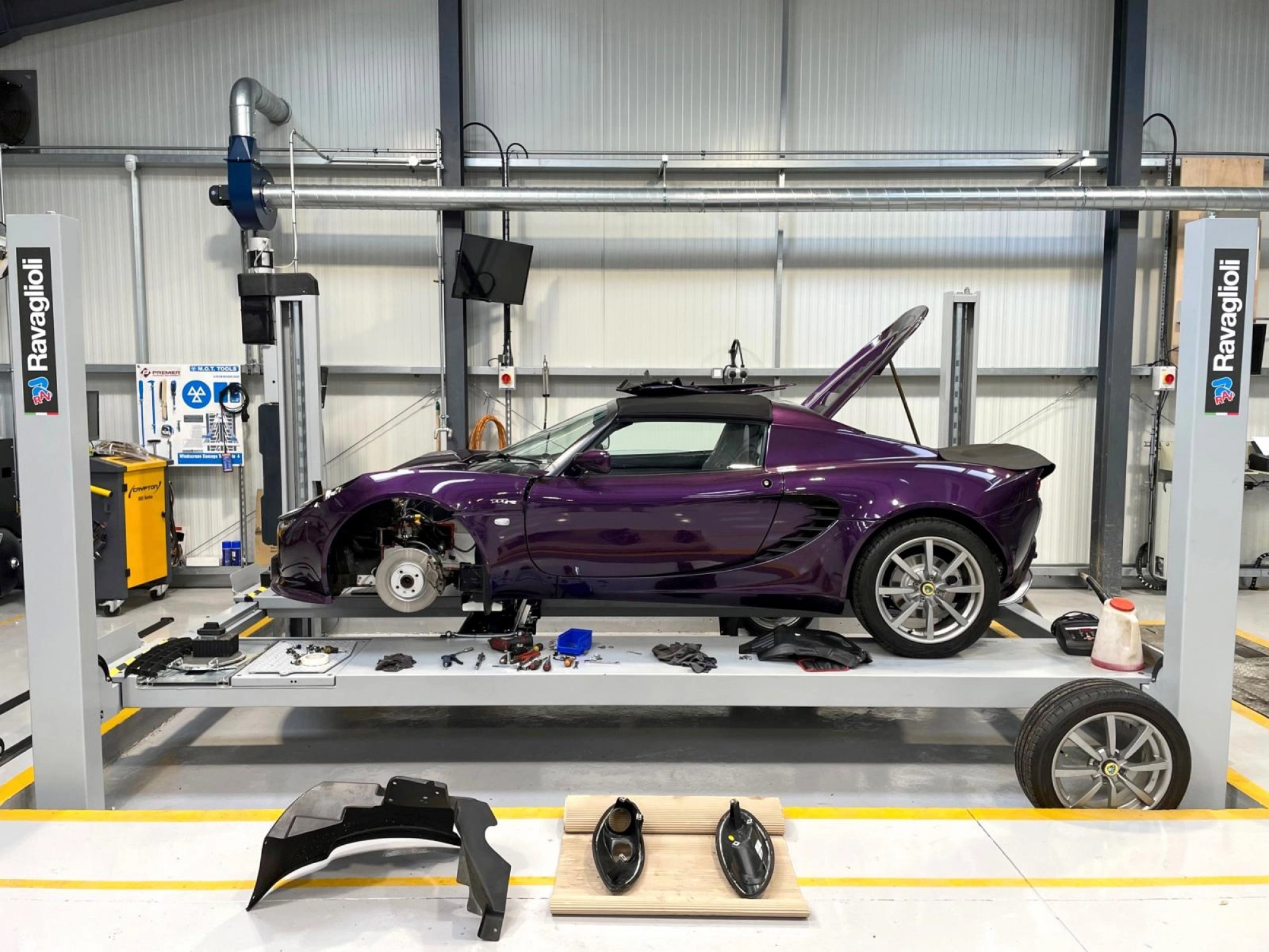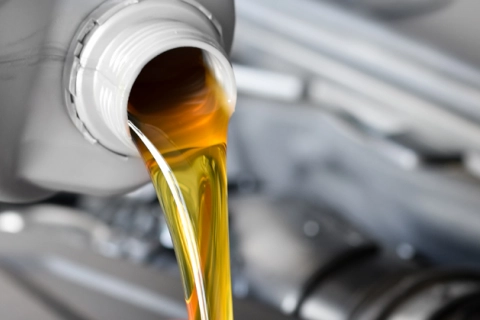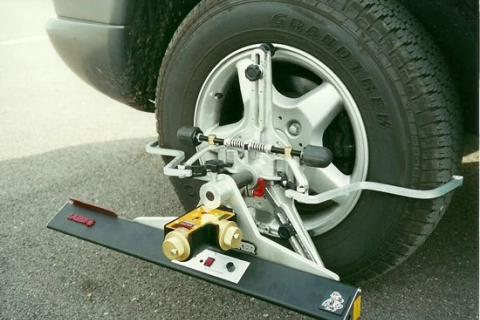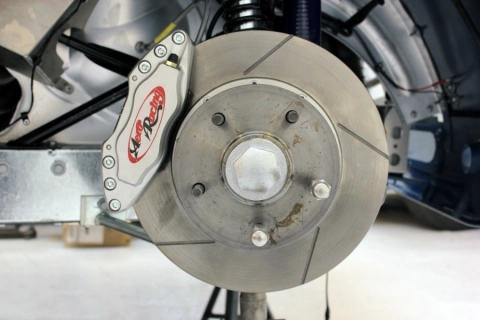Upgraded Lotus Elise Suspension

There are numerous upgrades available for the Elise and as it’s possible to spend considerable amounts of time and money on 'improvements', your starting point should be identifying your main reason for making changes.
Perhaps the original suspension components are worn out and need replacing. Perhaps it’s to make a more track day oriented car. Maybe it's just about achieving an even better road car.
If you want a standard, road going Elise, but think your car doesn’t feel as good as it should, probably nothing more radical is required than replacing any worn components, e.g. dampers (shock absorbers), ball joints or bushes, and checking/adjusting its suspension geometry.
If you're after a better road or track day car, read on for some possible upgrades and changes. Many are also relevant to Exiges, although quite a few of these mods may already be included as part of the standard specification.
Dampers and springs
One recognised upgrade for S1 Elises is to fit S2 Elise suspension. This replaces the Koni dampers with better quality Bilsteins and uses slightly stiffer Eibach springs with a lower ride height. The benefits are quieter suspension (Konis can bang and clatter) and improved handling and ride.
Adjustable dampers are a popular upgrade on all ages and models of Elise and can be:
- Single adjustable – on some makes, adjustment will affect just the rebound damping, whilst on others, adjustment simultaneously alters rebound and compression damping
- Two way adjustable – rebound and compression damping can be varied independently of each other
- Three way adjustable – allows alteration of rebound damping and alteration of low speed and high speed compression
As well as adjustable damping, the damper units normally have threaded spring platforms to allow spring pre-load and ride height to be altered. Lowering a car reduces its centre of gravity for less roll when cornering. Changing the spring platform height allows ‘corner weighting’ adjustments to be carried out to ensure the ideal distribution of the car’s weight over its 4 wheels.
Adjustable dampers should be fitted with suitably matched springs, though changes can be specified, e.g. stiffer springs will reduce the amount of roll when cornering, or pitching when accelerating/braking.
To ensure the best performing car, it’s about getting the right balance for both springs and dampers to allow the wheels to achieve optimum contact with the road surface. Too soft a suspension and it can bottom out or go into full rebound with instant weight transfer and loss of traction and control. Too hard and rather than absorbing a bump the suspension launches the car off the bump and road contact and hence control is lost.
Many people play around with settings when adjustable dampers are first fitted, and then never touch them again. So unless you’re into serious track days and need to set your car up differently for different circuits and conditions, consider how much adjustability you really want from your dampers. 3 way adjustables will cost you a lot of money and provide a mind-boggling number of possible settings!
Steering rack raiser plates
If ride height is lowered then the angle of the steering arm changes in relation to the height of the steering rack and will increase ‘bump steer’ (basically the wheels want to steer themselves due to camber/toe changes as the suspension and wheel travels through its up and down arc of movement). Raiser plates lift the steering rack and help to straighten the steering arm angle, so reducing bump steer.
Suspension geometry
There are 3 main suspension angles – toe, camber and castor – that need to be checked and adjusted if necessary. If these are out of adjustment, be it through normal usage and hitting too many pot holes(!) or through changed/adjusted suspension, then handling (and tyre wear) can be significantly compromised.
To read more about suspension geometry click on: **Suspension geometry and wheel alignment** link needed
Suspension bushes
As standard these are made from rubber and are relatively soft and the benefits include quiet operation and a comfortable ride. A downside of the softness is that the suspension components, e.g. wishbones, will experience a certain amount of movement in directions they ideally wouldn’t move in. This detrimentally affects the sharpness of the handling. Also over time the rubber bushes will wear and degrade and so affect handling as excess play is introduced.
Uprated bushes – there are various different materials used (often people talk about polybushes) – will give a better location of wishbones etc with less play or flex than rubber bushes and hence more precise handling. The downside is more noise and ride harshness. Depending on the design and material used, uprated bushes can have better longevity than rubber bushes.
Anti roll bars
A stiffer and adjustable front anti-roll bar will reduce the amount of body roll and also allow the understeer/oversteer characteristics of the car to be varied.
Tyres
Lots of different options and views on tyres…
However our view is simple, we go with what Lotus specifically recommend for their cars and that means Yokohama tyres (Lotus has worked closely with Yokohama to produce tyre specifications suitable for the Elise).
There are 3 main options available – the Advan Neova for S1 Elises, and the AD07 and A048 for the S2 cars. The AD07 is a road tyre that also performs well on occasional track days, whilst the A048 is an exceptional track day tyre and also fully road legal.
Rear toe link brace kits
Highly recommended for Elises doing track days and/or fitted with sticky tyres, e.g. A048s. These kits strengthen up the rear toe links and ball joints which can break under the stresses of track day style, hard cornering. They also add greater stiffness to the lower track control arm.
Shear panel
Suitable for the Toyota engined Elises. It reduces longitudinal and lateral compliance of the rear suspension and gives increased lateral hub stiffness and tyre contact patch stiffness, so improving performance on the track.
Engine mounts
The engine mounts for the Toyota engined cars are quite soft and allow what can be considered an excessive amount of movement of the engine in a track day situation. This can affect stability and also the quality of the gear change.
Uprated polyurethane engine mounts will reduce this movement but do transmit quite a bit of harshness into the passenger compartment.
Engine mount inserts are also available which although they don’t reduce engine movement as much as uprated engine mounts, are quicker and easier to fit and don’t transmit so much harshness.
In conclusion
This is little more than a general overview on handling and the changes and upgrades to consider. Iif you’d like to discuss things in more detail, please email john@allonwhite.co.uk or phone 01234 750205.
Finally, you may wish to consider decent training in track day driving. No amount of expensive suspension upgrades will compensate for poor driving technique. Lotus offer some excellent courses on their track at Hethel – see www.lotusdrivingacademy.com – or there are a number of very good companies also offering training, e.g. CAT Driver Training based here in Cranfield – see www.catdrivertraining.co.uk





